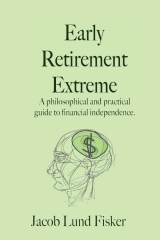It is now possible to buy extreme early retirement for under six figures. No, it’s not what you think. I’m not talking about selling my site (*), rather I’m talking about the ongoing decline in the market which has made dividend yields very high compared to just a year ago
(*) If someone wants to buy this domain/blog it is of course, like anything else I own, for sale out of general principle.
Now, for extreme early retirement, I advocate a dividend/income approach rather than a total return approach. I prefer the increased certitude of a money flow rather than basing it on past statistics (the 4% withdrawal rule). Using a dividend approach makes the 4%-rule less applicable. Rather than worrying about portfolio declines (which are great!), the main worry becomes whether the companies will keep paying a dividend and whether they will keep hiking it beyond inflation.
To arrive at the $85,000 I have assumed a 7% dividend yield and a $6000/year expense level (6000/0.07~85000). If you lower the yield to 6%, you need $100,000, but that expands the options quite a bit. I generally use a stock screener (here’s a free screener from google) to make the initial cut based on dividends and book value. After that I use value methods to narrow the selection further. I prefer to have a portfolio of 15-20 companies for proper diversification. Beyond that it becomes hard to keep track of things. If you do not want to do the work yourself, I am sure you can find an income based funds, mutual or exchange traded or closed ended.
An amount of $85,000 used to buy a kitchen remodeling during the real estate bubble. It’s probably a little bit cheaper today, but what are granite countertops compared to financial independence?
Of course this amounts demands getting rid of a lot of other superfluous baggage such as extra bed and bathrooms, cars, toys, etc. and what have you in order to cut the budget down to $6000/year.
It is entirely doable though. $6000/year means $500 a month. Here’s an example of how to split it up.
- Rent $200-250
- Health insurance $75 (get the cheapest possible and stay healthy!)
- Food $50-75
- Transport $0-$75
- Utilities $25-100
Clothes and entertainment can usually be had for free or pocket change.
This article is sponsored by Kevin of MyDividendStocks.com. For more information on Dividend Stocks, please visit his site.
Originally posted 2008-10-24 17:21:43.

